Known as one of the most beautiful places in the world
- Paul Aage Hegvik

- Mar 30
- 17 min read
At the foot of the country's highest mountain, you can experience the city of Sapa, a world of breathtaking nature, cultural diversity, and unforgettable adventures.

Sapa is a town situated 1,500 meters above sea level in the Lào Cai province of northwest Vietnam, which borders China. The town is located approximately 38 kilometers northwest of the provincial capital, also called Lào Cai, and about 320 kilometers north of the capital city, Hanoi. Nestled in the Hoàng Liên Son mountains, Sapa is renowned for its stunning mountainous landscapes, ethnic diversity, and rich cultural heritage. The website TimeOut is among several that have named Sapa one of the most beautiful towns in the world.
Mountain climbing and trekking
These majestic Hoàng Liên Son mountains dominate the landscape of the province, with the highest peak being Fansipan, the tallest mountain in Vietnam and the entire Indochina Peninsula. The mountains boast a variety of unique plant species and wildlife, offering excellent opportunities for both mountain climbing and trekking.
Lào Cai province is also famous for its impressive terraced rice fields that cascade down the mountainsides. These traditional terraces, built by local farmers over centuries, create a breathtaking visual effect and are an integral part of the region's landscape.
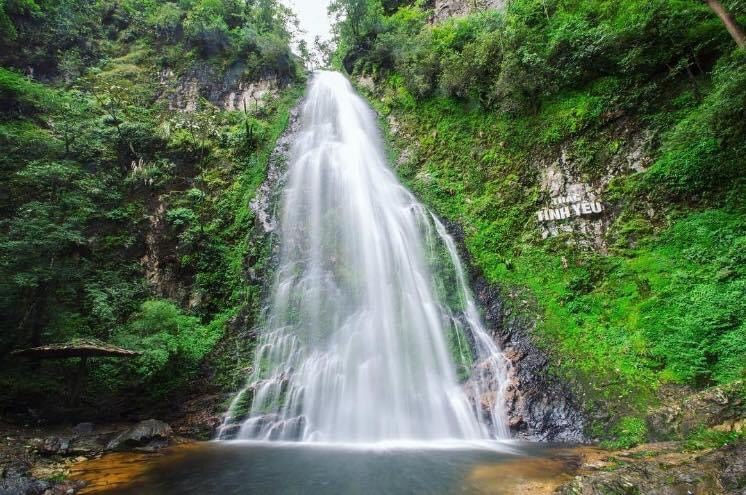
Check the seasons before you travel
The climate in Lào Cai province is influenced by its location in the northern mountains of Vietnam. Generally, the area has a temperate climate with four distinct seasons.
Spring (March - April):Spring in Sapa and Lào Cai is characterized by mild temperatures and increasing humidity. This is a popular time for visitors, as the landscape becomes green and lush after winter.
Summer (May - August):Summer brings warmer temperatures to the area, but due to the high mountains, it can still feel pleasant. Daytime temperatures can range from 15°C to 30°C, and rain showers are common, especially in July and August.
Autumn (September - November):Autumn is often considered the best time to visit Sapa and Lào Cai due to mild temperatures, lower humidity, and fewer rain showers. This season is ideal for hiking and outdoor activities, as the landscape is beautiful with autumn colours.
Winter (December - February):Winter in Sapa and Lào Cai can be cool and damp, with average daily temperatures dropping below 10°C. Occasionally, the area may experience frost at night, especially in the higher mountain regions.
It's important to note that the weather in Sapa and Lào Cai can be unpredictable and may vary from year to year. There are also climate differences depending on the elevation and location within the area. Travelers should therefore be prepared to dress according to the weather conditions and check forecasts before heading out.
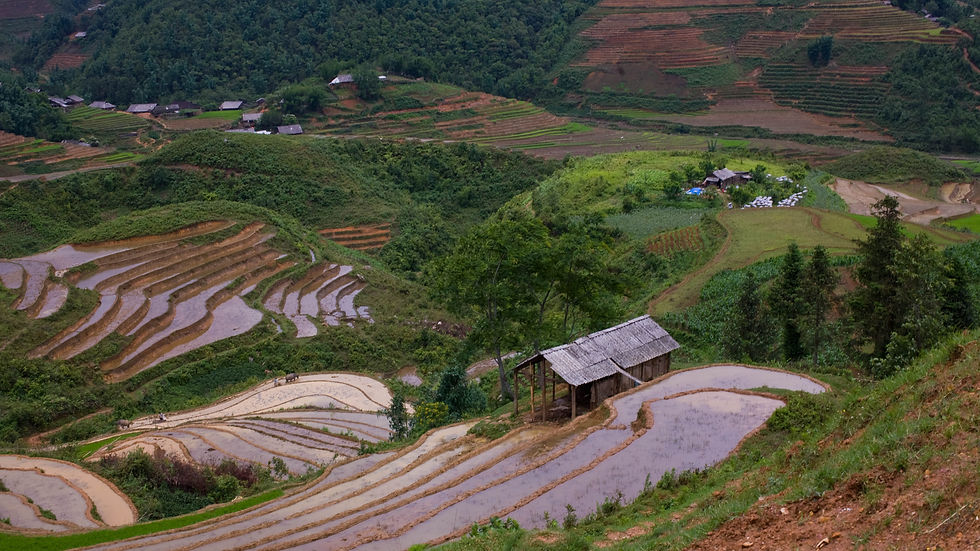
Prone to flooding and landslides
Due to the rugged terrain and heavy rainfall in the area, Sapa and Lào Cai are prone to flooding and landslides, especially during the rainy summer and autumn seasons. These events can lead to destruction of infrastructure, crops, and property.
The area can be affected by tropical cyclones that hit Vietnam's coastal regions. Although Sapa is located inland, remnants of these storms can bring heavy rain and strong winds, causing damage and disruptions.
On the flip side, the area can also experience periods of drought and water shortages, particularly during the dry season in winter and spring. This can impact agriculture and access to clean water for the local population.
Additionally, wildfires can occur in the dry seasons when vegetation is particularly vulnerable to fire.
Long journey
To travel to Lào Cai and Sapa, there are several options depending on your location and preferences for transportation. A popular choice is to take the overnight train from Hanoi to Lào Cai. The trains offer sleeper cars with varying levels of comfort, and the journey typically takes about 8-9 hours. After arriving in Lào Cai, you can take a short drive to Sapa town.
Buses also run from Hanoi to Sapa, with a travel time of around 6-7 hours, depending on traffic and road conditions. Several bus companies offer comfortable services to Sapa.
Of course, there is also the option to rent a car or motorcycle, which allows you to enjoy stunning views along the way.
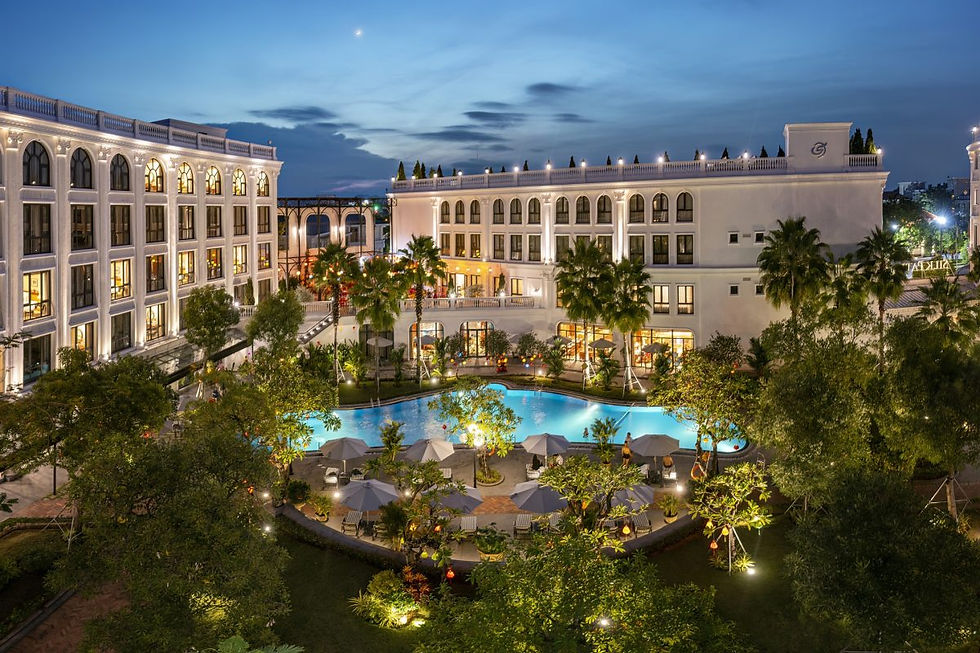
Luxury or authenticity?
Sapa offers a range of accommodations, from luxurious hotels and resorts to more authentic homestays and guesthouses, catering to various preferences and budgets.
Luxury Options: Sapa has several luxury hotels and resorts that provide top-notch facilities, stunning mountain views, and high standards of service.
Popular accommodations include:
Victoria Sapa Resort & Spa
Silk Path Grand Resort & Spa
Topas Ecolodge
Mid-Range Hotels: For those seeking comfortable yet affordable options, Sapa features many mid-range hotels and guesthouses. Notable mentions are:
Sapa Horizon Hotel
Sapa Panorama Hotel
Sapa Unique Hotel
Authentic Experiences: If you prefer a more authentic experience and want to connect with the local community, homestays and guesthouses are popular choices. These accommodations usually offer simple but cozy lodging and opportunities to participate in local activities. Examples include:
Sapa Sisters Homestay
Hmong Sapa Hotel
Eco Palms House
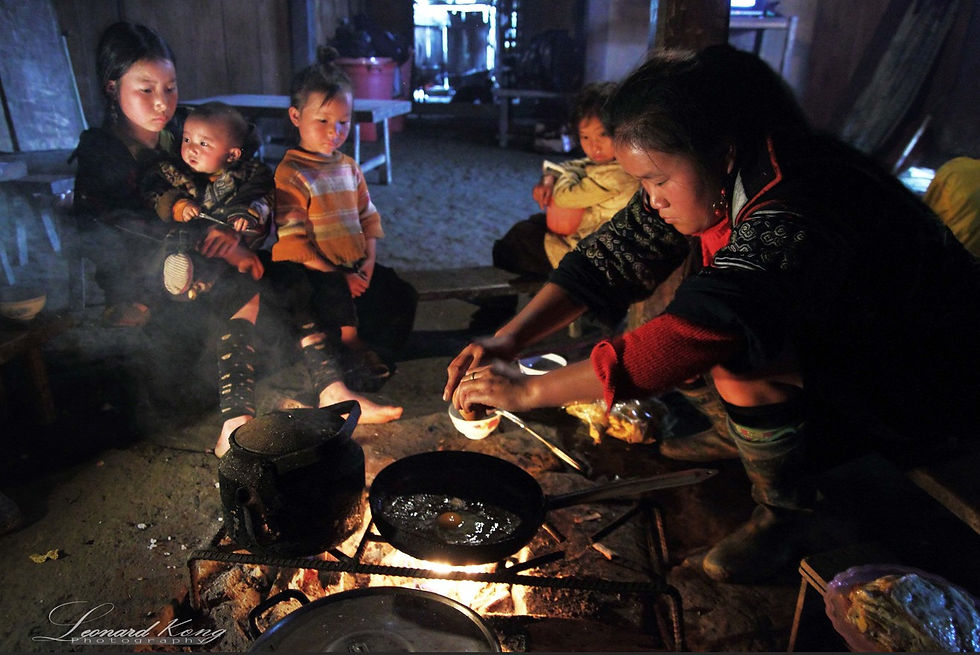
Exciting culinary offerings
Sapa boasts numerous restaurants serving Vietnamese dishes at reasonable prices. One of the famous local specialties is Thang Co, a well-known delicacy among travellers that originates from the Hmong people. The name translates to "a big pot of water," and the main ingredient is usually horse meat, although locals also prepare it with beef, buffalo, or pork.
You can also try Thit Trau Gac Bep, which is dried buffalo meat sourced from water buffaloes that roam freely in the mountains and hills of the area.
One dish you shouldn't miss when visiting Sapa is the black chicken. As the name suggests, both the meat and bones are black. Across Asia, this chicken is believed to help treat heart disease and is usually prepared with traditional herbs or served in a sweet soup with honey.
Black chicken can be cooked in various ways, including frying, boiling, and steaming, but the most popular choice is grilled black chicken marinated with honey. After marinating in honey, the chicken is grilled directly over hot coals, allowing the sweetness of the meat and honey to combine, making this Sapa dish an unforgettable taste experience.
Recommended Restaurants:
Little Sapa Restaurant
Good Morning Vietnam
Sapa BBQ Garden
For those who prefer international cuisine, Sapa also has a selection of restaurants serving Western and other international dishes, including:
Delta Restaurant
The Hill Station Signature Restaurant
Le Gecko Restaurant & Bar
In addition, cozy cafes and bakeries offering local pastries and sweets are scattered around Sapa, such as:
Baguette & Chocolate Café
Gem Valley Coffee & Bakery
The Haven Sapa Camp Site
If you’re just looking for a drink, you can try:
Red Dao House Bar
The Valley Bar & Pub
The Hill Station Lounge BarWhile nightclubs are not prevalent, you can find a good atmosphere at some of the bars.
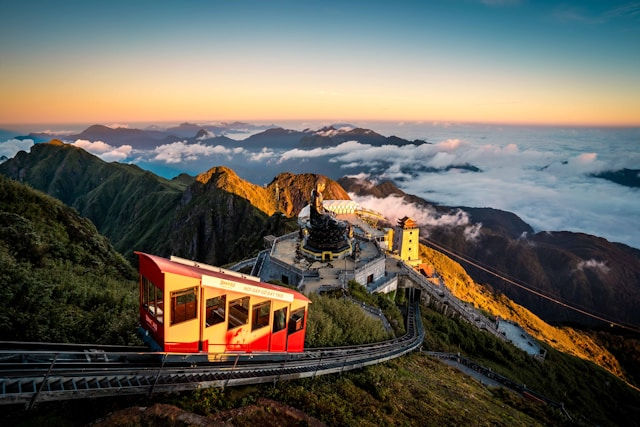
Vietnam's highest mountain
Fansipan reaches an elevation of 3,147 meters above sea level. The most common route to summit Fansipan is via the Fansipan Summit Trail, a challenging hike that begins at Tram Ton Pass, located about 17 kilometers southwest of Sapa town. From there, you follow a well-marked trail that takes you through bamboo forests, rainforests, and eventually to meadows and rocky peaks near the mountain's summit. The trek typically takes 2-3 days, depending on the route and pace, and involves overnight stays in the mountains along the way.
For those who prefer a less strenuous way to reach the summit, there is also a cable car, Fansipan Legend, which takes you from Sapa to the upper area of the mountain. The cable car brings you close to the summit, and from there, it’s a short hike to the top.
Guided tours to Fansipan are also available, either as part of an organized group tour or with a private guide. Guided tours can provide additional support and guidance along the way and can be tailored to your preferences and skill level.
Regardless of how you choose to reach the summit of Fansipan, it's essential to be well-prepared, especially regarding equipment, clothing, and acclimatization to the altitude. Fansipan is a stunning mountain with spectacular views, and it's definitely worth the effort to reach the top to experience the impressive nature and majestic landscapes of the Hoang Lien Son mountains.
Spiritual journey
At the top of Fansipan, there is a Buddha statue and a temple complex that attracts pilgrims and visitors from across the country. This statue of Buddha serves as a symbolic and spiritual attraction for many, providing a space for prayer, meditation, and reflection.
The temple and statue were built atop Fansipan to honour Buddha and offer pilgrims and visitors a chance to worship and experience a sense of peace and spirituality at the highest point of the mountain. For many, visiting the summit of Fansipan is not only a physical achievement but also a spiritual journey.
Visitors who reach the summit of Fansipan can admire the breathtaking views of the surrounding mountains and valleys while engaging in the spiritual and religious aspects of visiting the temple and Buddha statue.
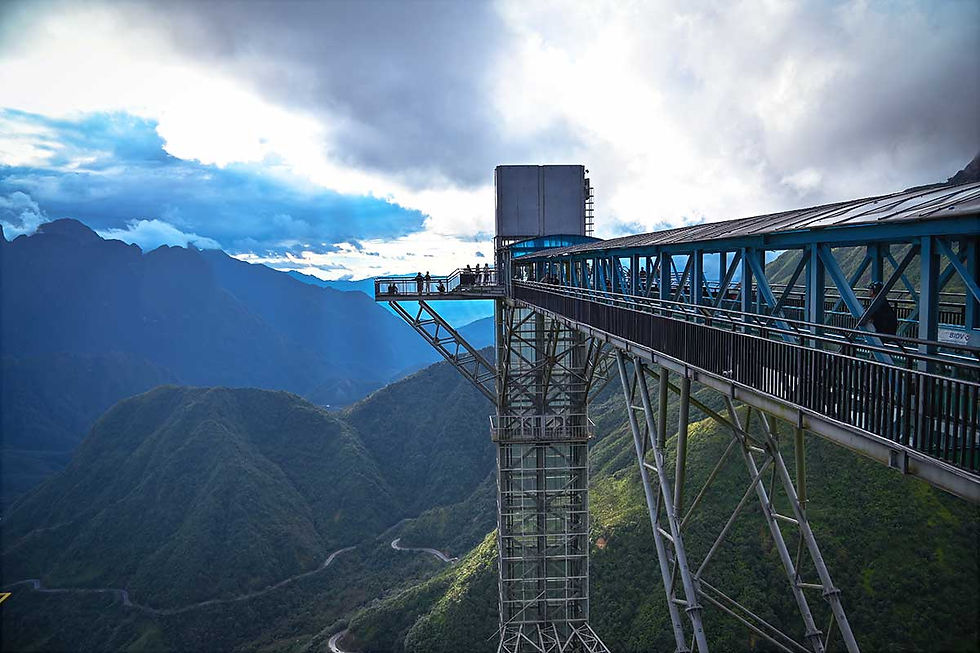
Rồng Mây glass bridge
The glass bridge in Sapa, Vietnam, officially known as the Rồng Mây glass bridge, is a popular attraction offering breathtaking views of the stunning Hoàng Liên Sơn mountain range and the lush valleys below. The bridge is located about 2,200 meters above sea level and spans across a cliff, making it one of the highest glass bridges in Southeast Asia.
Visitors can walk on the transparent glass floor while taking in the panoramic scenery of Sapa, which is known for its terraced rice fields, misty mountains, and the local Hmong ethnic culture. The bridge also features other attractions like a cliff-hanging elevator and adventure activities like bungee jumping and zip-lining, making it a thrilling destination for adventure seekers.
For those visiting Sapa, the Rồng Mây glass bridge provides a unique way to experience the natural beauty of the region from a dramatic, elevated perspective.
Historical trekking
The area is also characterized by small ethnic villages inhabited by the Hmong, Dao, Tay, and other ethnic minority groups. These villages not only provide insight into the local lifestyle and culture but are also set in beautiful natural surroundings, making them popular tourist destinations.
Sapa Museum, also known as the Sapa Culture Museum, is a small museum dedicated to preserving and showcasing the cultural heritage of the ethnic minorities in the Sapa region. The museum features exhibits on traditional clothing, tools, arts and crafts, as well as information on the history, customs, and traditions of the Hmong, Dao, Tay, and other ethnic groups.
While not a traditional museum, the Sapa Radio Tower Viewpoint can be an interesting place to learn about the area’s geography and history. From this viewpoint, you can enjoy stunning panoramic views of Sapa Valley and the surrounding mountains, often accompanied by informative posters or signs providing background information about the region.
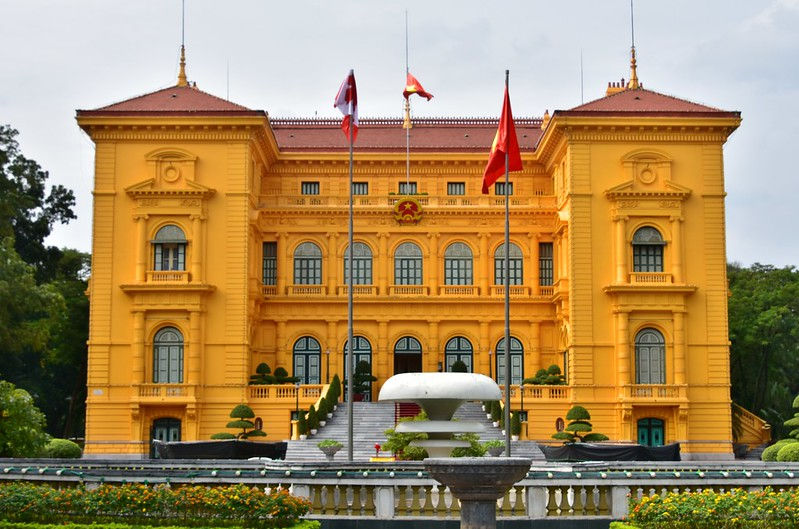
Colonial era
During the French colonial period, Lao Cai province and the town of Sapa played a si
gnificant role in Vietnam. France colonized Vietnam in the 19th century, leading to substantial upheaval in the region.
France recognized the potential of northern Vietnam, particularly due to its natural beauty and cooler climate, and began developing the area for recreation and resource extraction. Sapa, located in the Hoàng Liên Son mountains, was chosen as a mountain resort for French colonists looking to escape the hot and humid summers of the lowlands.
During this period, roads, railways, and infrastructure were built to make the area more accessible to European settlers and merchants. Colonial-style buildings were constructed, and Sapa began to take shape as a European mountain town, complete with hotels, shops, and public buildings.
France also exploited the area's resources, including mining for minerals like silver and copper. This led to an economic boom in the region, but it also came with challenges, including the exploitation of the local population and environmental consequences.
The French colonial era ended after World War II when Vietnam fought for its independence. Although the French withdrew, they left a lasting impact on Sapa and Lao Cai province through their architecture, culture, and infrastructure.

Vietnam war
During the Vietnam War, Lao Cai province and the town of Sapa played a strategic role due to their proximity to the Chinese border and their geographical location in northern Vietnam.
Lao Cai and Sapa were often used as transit areas for supplies, weapons, and troops, especially on the Ho Chi Minh Trail, an important supply route for North Vietnam running through Laos, Cambodia, and Vietnam. These supplies were used by North Vietnamese forces in their fight against the South Vietnamese government and their American allies.
The area was also subject to conflicts and combat operations. The densely forested and hilly terrain made it an ideal location for guerrilla warfare and hidden bases for the Viet Cong and North Vietnamese forces. American forces conducted operations in the region to try to destroy Viet Cong bases and disrupt the functioning of the Ho Chi Minh Trail.
The ethnic minority groups in the area were also involved in the conflict, sometimes as allies of the North Vietnamese army and other times as supporters of the American forces. This led to tensions and internal conflicts among the local population.
The Vietnam war left deep scars on the Lao Cai and Sapa region, with destruction of infrastructure, loss of life, and economic decline. Many villages and communities were heavily impacted by the conflict, and rebuilding after the war took a long time.
Although the Vietnam War is over, its memories remain vivid in Lao Cai and Sapa, contributing to the region's history and identity today.
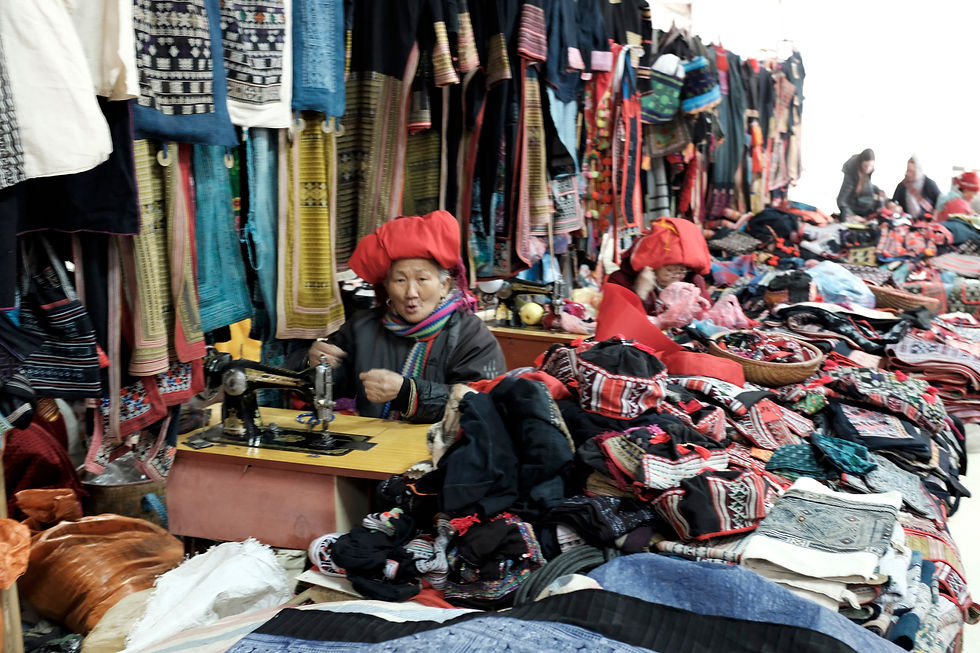
Ethnic groups
The largest ethnic group in Lao Cai province, including the Sapa area, is the Kinh people, also known as Vietnamese. The Kinh people make up the majority of the population in Vietnam overall and are the dominant ethnic group in most regions, including Lao Cai province.
Several ethnic minority groups, including the Hmong, Dao, Tay, and smaller groups such as Giay, Xa Pho, and Phu La, live in Lao Cai province and the town of Sapa. These groups have a rich cultural heritage and have contributed to the diversity and dynamics of the region over the centuries.
Dao and Tay peoples
The Dao people are another significant ethnic group in the region, known for many of the same traditions as the Hmong. They are recognized for their advanced craftsmanship, particularly in weaving and embroidery. The Dao have a rich oral tradition and are famous for their legends, songs, and dances. They are also skilled farmers, particularly noted for their knowledge of medicinal plants and traditional healing methods.
The Tay people are among the oldest ethnic groups in Vietnam and have a long history in the Lao Cai region. They are known for their advanced agricultural systems and terraced farming techniques. The Tay also have a rich musical tradition, excelling in playing traditional instruments such as flutes, drums, and castanets.
Challenges faced by minority groups
All minority groups in the region have faced challenges related to access to education and healthcare due to their isolated locations in the mountainous areas. However, governments and international organizations have been working to improve access to basic services and empower the Hmong community through education and infrastructure projects.
In recent years, Lao Cai and Sapa have become popular tourist destinations due to their stunning natural beauty and cultural diversity. While tourism has led to economic growth, it has also brought challenges such as overcrowding, environmental issues, and cultural influences.
Historical context
Throughout Vietnam's history, ethnic minority groups, including those living in Lao Cai province, have encountered a range of political and social challenges. These issues have varied over time and have been influenced by factors such as political repression, economic disparities, and cultural marginalization.
The interplay of these challenges has shaped the experiences and resilience of the Dao, Tay, and other ethnic groups in the region, contributing to their unique cultural identities while also highlighting the need for continued support and development efforts.
Historical suppression of minority groups
Minority groups in Vietnam have often faced significant challenges, particularly concerning their land rights, as political decisions regarding infrastructure, agriculture, and forestry development have led to the loss of their traditional lands. This has resulted in conflicts and unrest within minority communities.
Many of these groups have fought to preserve and promote their languages, cultures, and traditions, which have sometimes been suppressed or assimilated into the dominant culture. Historically, minority groups have been underrepresented in Vietnam’s political structures, limiting their influence and ability to advocate for their interests and needs.
Access to education, healthcare, and economic resources has been unevenly distributed between minority groups and the majority Kinh population, contributing to socioeconomic inequality and marginalization. Some minority groups have also experienced pressure to assimilate into the dominant culture, adopting practices and values that do not align with their traditional identities.
Improvements underway
Despite decades of suppression, there have been notable improvements in recent years. The Vietnamese government has implemented programs aimed at enhancing access to education and healthcare for ethnic minorities, especially in remote areas like Lao Cai. These initiatives have contributed to reducing illiteracy rates and improving the health of minority populations.
Steps have also been taken to protect and promote the cultural rights of ethnic minorities, including support for the preservation of languages, traditions, and cultural practices. This includes backing handicrafts and cultural heritage as sources of income and pride.
Economic development programs have been introduced in minority areas, focusing on infrastructure projects, agricultural and enterprise development, and support for microfinancing and entrepreneurship among minority populations.
Crime rates and safety
Lao Cai province and the Sapa area generally experience low crime rates compared to larger cities in Vietnam. However, there are challenges associated with crime, particularly due to tourism in Sapa and the proximity to the Chinese border.
As with many tourist destinations globally, theft and pickpocketing can be issues in the Sapa area, especially in crowded locations or popular tourist spots like markets. There can also be instances of drug trafficking in border areas, mainly due to the nearby border with China, but this is typically limited. Authorities actively work to combat drug-related crime.
Additionally, issues related to alcohol abuse or undesirable behavior associated with party culture can sometimes arise, particularly among tourists. Human trafficking may also be a concern in border areas like Lao Cai due to geographic proximity to other countries.
To combat crime and ensure safety for both locals and visitors, authorities in Lao Cai province have implemented various measures, including increased police presence and monitoring of potential criminal activities. Tourist police are also available to assist tourists and address any issues they may encounter during their stay.
Safety advices
Traveling to Vietnam is generally considered safe for tourists today. While historical tensions stemming from the Vietnam war do exist, they rarely translate into negative experiences for visitors. Here are some key points to consider:
Current attitude: The Vietnamese people are known for their hospitality and friendliness toward tourists. Many locals appreciate the interest in their culture and history.
Tourism infrastructure: Vietnam has a well-developed tourism industry, with many services available to support travelers, including guided tours, accommodations, and transportation options.
Safety precautions: Like any travel destination, it's wise to take basic safety precautions. Petty crime, like pickpocketing, can occur in crowded areas, so staying vigilant is essential.
Cultural sensitivity: Being respectful of local customs and traditions will help foster positive interactions with locals. Understanding some basic Vietnamese phrases can also enhance your experience.
Travel advisories
It's a good idea to check the latest travel advisories from your government before planning your trip, as they provide updated information about safety and health conditions.
Showing respect and understanding to people affected by a war, such as those in Vietnam post-Vietnam War, involves several thoughtful approaches. Here are some key ways to demonstrate this:
Educate Yourself: Learn about the history, culture, and impact of the war on the local population. Understanding the historical context will help you engage more meaningfully with locals.
Listen Actively: When locals share their experiences or stories, listen attentively without interrupting. Show empathy and acknowledge their feelings.
Use Respectful Language: Be mindful of your language when discussing the war. Avoid inflammatory terms and recognize the sensitivity surrounding the topic.
Acknowledge History: If the topic arises, acknowledge the complexities of the past. Avoid making assumptions or generalizations about people's views based on their nationality or history.
Participate in Local Culture: Engage in local customs and traditions. This shows appreciation for their heritage and helps foster positive interactions.
Support Local Initiatives: Contribute to local economies by supporting businesses, artisans, and community projects. This demonstrates respect for their livelihoods and culture.
Volunteer: Consider volunteering with local organizations or charities. This can be a meaningful way to give back and connect with the community.
Be Patient and Open-Minded: Understand that some individuals may still carry emotional scars from the war. Be patient and open to different perspectives.
Promote Peace and Understanding: Engage in conversations that promote reconciliation and understanding. Focus on shared humanity and common goals rather than divisions.
Respect Personal Boundaries: Not everyone may want to discuss the war or its impact. Respect their boundaries and let conversations flow naturally.
By approaching interactions with empathy and cultural sensitivity, you can contribute to a more respectful and understanding relationship with those affected by past conflicts.
Overall, millions of tourists visit Vietnam each year without significant issues, enjoying its rich culture, beautiful landscapes, and delicious cuisine.
Exciting places to visit in Vietnam

When visiting Vietnam, there are numerous remarkable places to explore.
The country boasts a rich cultural heritage, diverse landscapes, and an exciting culinary scene.
Halong Bay, a UNESCO World Heritage Site, is renowned for its stunning limestone islands and clear blue waters. A boat tour through Halong Bay offers an unforgettable experience, allowing visitors to explore caves, go diving, or kayak while taking in the breathtaking scenery.

As the capital city of Vietnam, Hanoi is a blend of old and new cultures. Visitors can experience the Old Quarter with its narrow streets, temples, and historic landmarks like Hoan Kiem Lake and the Ho Chi Minh Mausoleum. Be sure to try delicious street food at one of Hanoi's bustling markets or food stalls.
Exploring Vietnam provides a unique opportunity to appreciate the country’s diverse cultures, historical richness, and beautiful landscapes.
Hoi An
Hoi An is famous for its well-preserved old town and vibrant lanterns. Visitors can stroll along the cobblestone streets, visit beautiful temples, and savor dishes from the local cuisine. Hoi An is also renowned for its tailor-made clothing, allowing you to purchase a unique garment that reflects your style.
Hue
Hue, a former imperial capital, boasts a rich history and cultural heritage. In this city, you can explore impressive imperial tombs, visit the majestic Hue Citadel, and take a boat trip along the scenic Hương River (Perfume River), known for its tranquil beauty.
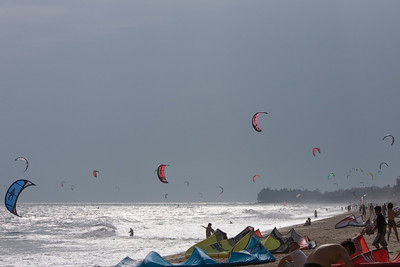
Mui Ne
Mui Ne is a popular beach destination known for its golden sand dunes and crystal-clear waters. It’s an excellent place for sunbathing, windsurfing, and sandboarding, offering a perfect blend of relaxation and adventure.
Dalat
Dalat, often referred to as «Vietnam's Paris,» is celebrated for its cool climate, French colonial architecture, and stunning gardens.
Visitors can explore local markets, enjoy fresh fruits and vegetables, and hike through the surrounding mountains and waterfalls, making it a delightful escape into nature.
These cities showcase Vietnam's diverse beauty, rich cultural heritage, and opportunities for relaxation and adventure. Each destination offers unique experiences, making Vietnam a fascinating country to explore.







